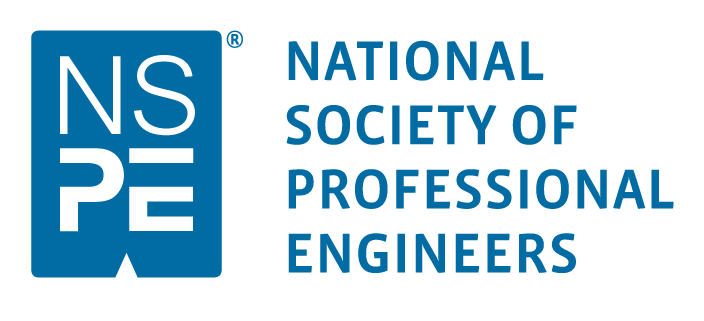Behind the Bid: How Well-Drafted Specifications Boost Project Bids
In community settings, the need for capital facility improvements or new projects is a common scenario. A New Jersey condominium association or homeowner’s association (HOA) could have an aging clubhouse, roofing, building façade, or another common element that requires evaluation and replacement. In some cases, the community has already conducted a reserve study NJ and set aside sufficient funds to address these rising demands. However, the board might be unsure how to initiate the project.
The volunteer-based board members, while dedicated to community service, may lack expertise in project management and construction. Without an expert to guide them, the board may become lost on where or how to begin, causing a delay in project initiation.
At the heart of this dilemma lies the pivotal role of project design specifications – a key factor that significantly impacts project and bidding direction in HOAs.
Construction Specification
A construction specification is a detailed document that outlines the requirements, standards, and parameters of a construction or development project. They encompass various aspects, including:
- Materials
- Dimensions
- Systems and Product Quality
- Technical Specifications
- Project Scope
- Objectives and Goals
- Technical Requirements
- Timeline and Milestones
- Budget and Resources
- Quality Standards
- Communication Protocols
- Risk Management Plan
- Acceptance Criteria
- Contract Type
For example, specifications for a new community swimming pool may specify depth variations, type of water filtration system, and special features like diving boards or handicap accessibility. Well-drafted specifications play a crucial role in the accurate execution of project requirements.
Various specifications can be employed during different stages of a project. The three primary types of specifications are:
- Performance specification– focuses on a project’s desired outcomes and functional requirements. It is used when flexibility is allowed, and contractors can propose innovative solutions to achieve project goals.
- Prescriptive specification– dictates precise details such as materials, dimensions, and methods to be used in the construction project. This type of specification is employed when a high level of control over the project’s components is necessary.
- Proprietary specification– provides precise details, including product range names, reference codes, and key properties. It is used when a particular product or material is crucial for the project’s success due to unique features, compatibility, or a specific design requirement.
The specification must be drafted by a knowledgeable and experienced professional. A qualified licensed professional structural engineer NJ can help draft a clear construction specification that adheres to project goals and facilitates successful contractor engagement.
How is a Specification Drafted?
Drafting a construction specification is like crafting a roadmap for a project. It helps everyone involved understand where they are headed.
The following steps are usually taken to create a clear, accurate, and complete project specification.
- Define Project Scope
The process initiates with a meeting with the board to clearly identify the deliverables, objectives, tasks, and constraints involved in the project. Here, the parties define the overall vision and address specific concerns like scheduling and phasing.
- Engineer Development
At this point, a NJ structural engineer conducts a thorough site inspection to understand project site conditions and unique properties that may impact the construction process. Based on the inspection, they will analyze the project requirements and develop technical solutions to meet the project objectives. They will then create detailed plans and engineering specifications that translate the project’s conceptual design into actionable construction guidelines.
- Bid Form Inclusion
The specification includes a bid form defining when bids are due and to whom they should be delivered. The bid form often accompanies specific instructions for handling unforeseen conditions and advises contractors to provide prices for contingencies in addition to the main project.
- Board Review
The association board reviews the draft plans and specifications to check for alignment with the intended scope of work. The board may also incorporate input based on past experiences with contractors.
How Specifications Attract Qualified Bidders
Once the association has a project specification, the next step is to find qualified contractors for the job. Armed with clear and detailed project specifications, the association can effectively communicate the project’s complexity and expectations to potential contractors. This comprehensibility filters out unqualified bidders who may be deterred by the specificity of the requirements. As a result, the pool of potential contractors will likely consist of those with the expertise and capability to meet the project’s demands.
Specifications also help standardize the information provided to potential bidders. They enable a clear and uniform understanding of the project’s scope, quality standards, and requirements. Clarity in project details facilitates a competitive and fair bidding process, as contractors can submit proposals based on the same criteria. Thus, the association can effectively compare proposals and select the most qualified contractor for the project.
Construction Bidding Process
Bid rules and procedures differ between public and private projects. Private owners have the flexibility to establish their own rules. In contrast, public projects are bound by federal, state, and local bidding statutes. For example, public construction contracts must have a public bid opening and a public reading of all bids received.
Generally, though, the construction bidding process comprises the following key stages:
- Bid solicitation
- Bid submission
- Bid selection
- Contract formation
- Project delivery
Bid Solicitation: The project owner or their representative issues an Invitation for Bid (IFB), a Request for Quote (RFQ), or a Request for Proposal (RFP) to formally invite contractors to submit bids for a particular project. A bid package is also furnished, containing the following:
- construction specifications
- project requirements
- contract type project delivery method
- bonding and insurance requirements
Bid Submission: Interested contractors submit proposals or bids to secure the contract for the project. This involves a competitive process where contractors review project specifications, estimate costs, and propose timelines for project completion.
Bid Selection: The project owner evaluates the bids based on various factors, including cost, qualifications, and adherence to specifications. With the help of a consulting engineer, the board performs a comparative evaluation, reviewing each bid for compliance with specifications and pricing discrepancies. In addition, the consulting engineer will conduct reference checks on the contractors to determine if they have performed this type of work before to the satisfaction of their clients. The goal is to select the contractor who offers the best overall value, experience, and qualifications.
Contract Formation and Project Delivery: Once the contractor is selected, parties enter negotiations to finalize terms. Upon reaching an agreement, the project moves into the construction phase. The contractor mobilizes resources, procures materials, and begins executing the project according to the specifications outlined in the contract.
Seek Project Development Support in New Jersey
Precise project specifications minimize ambiguity, reduce the likelihood of misunderstandings, and contribute to the successful execution of the project. They also streamline the bidding process and enable informed contractor selections.
Communities should hire professionals to draft project specifications. Engaging professionals with relevant experience and expertise helps the association develop comprehensive and accurate specifications. Professionals understand the legal aspects of construction projects, helping communities draft specifications that comply with relevant regulations, codes, and standards.
Looking for expert guidance in drafting engineering specifications and selecting the right contractor for your project? Boost project bids with Lockatong Engineering’s expertise.
Lockatong Engineering has an expert team ready to assist in drafting precise engineering specifications tailored to your community needs. Contact us today to find professional support for your association’s construction specifications and bidding requirements.








